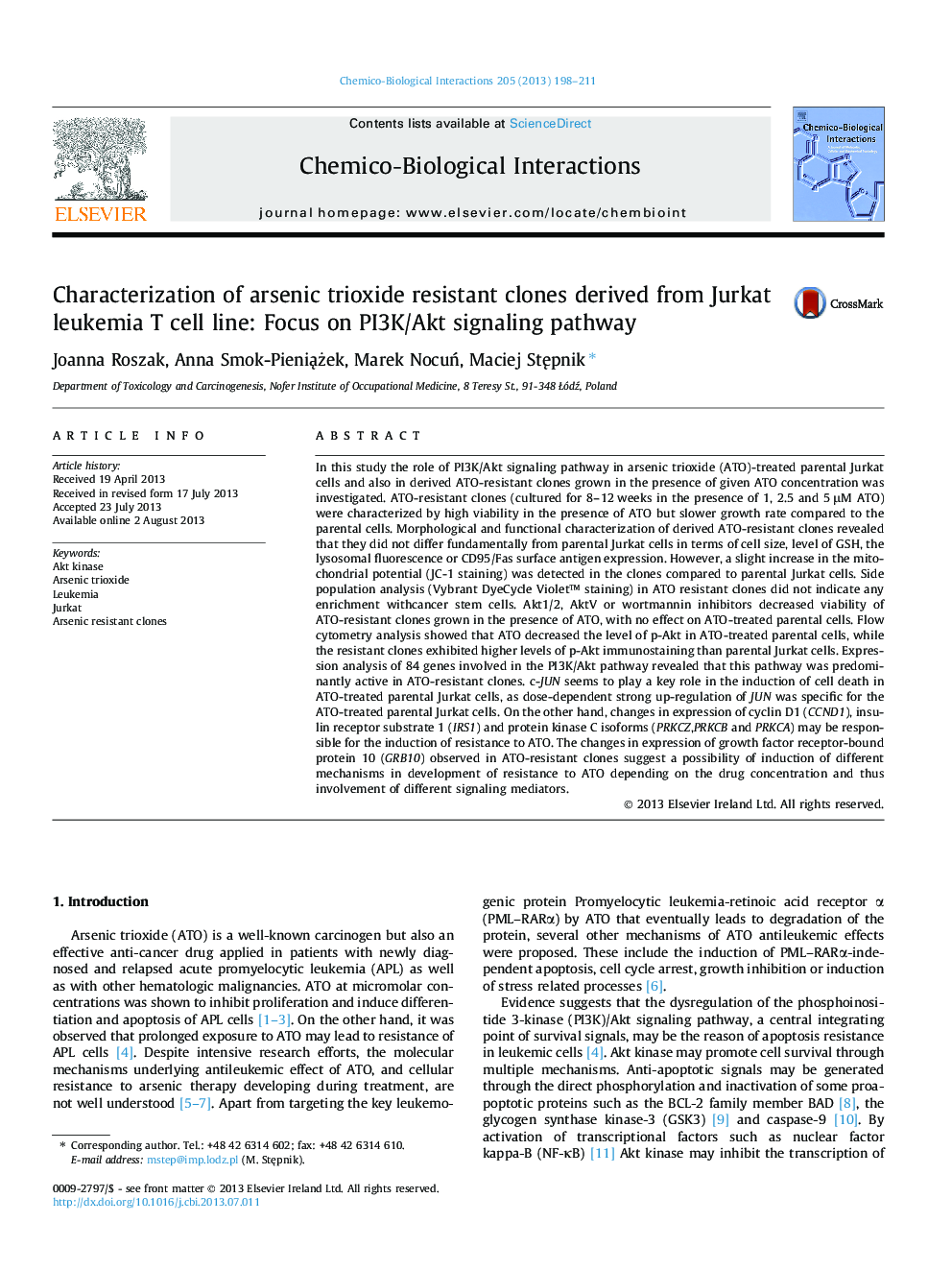| کد مقاله | کد نشریه | سال انتشار | مقاله انگلیسی | نسخه تمام متن |
|---|---|---|---|---|
| 5848087 | 1130136 | 2013 | 14 صفحه PDF | دانلود رایگان |

- Prolonged incubation of Jurkat cells with ATO (1-5 μM) leads to resistance.
- PI3K/Akt inhibitors partially restore cytotoxic effect of ATO in resistant clones.
- ATO-resistant clones show higher levels of p-Akt compared to parental Jurkat cells.
- c-Jun kinase is important in death induction in ATO-treated parental Jurkat cells.
- CCND1, IRS1, PRKCA, PRKCB, PRKCZ, and GRB10 are involved in development of resistance to ATO.
In this study the role of PI3K/Akt signaling pathway in arsenic trioxide (ATO)-treated parental Jurkat cells and also in derived ATO-resistant clones grown in the presence of given ATO concentration was investigated. ATO-resistant clones (cultured for 8-12 weeks in the presence of 1, 2.5 and 5 μM ATO) were characterized by high viability in the presence of ATO but slower growth rate compared to the parental cells. Morphological and functional characterization of derived ATO-resistant clones revealed that they did not differ fundamentally from parental Jurkat cells in terms of cell size, level of GSH, the lysosomal fluorescence or CD95/Fas surface antigen expression. However, a slight increase in the mitochondrial potential (JC-1 staining) was detected in the clones compared to parental Jurkat cells. Side population analysis (Vybrant DyeCycle Violet⢠staining) in ATO resistant clones did not indicate any enrichment withcancer stem cells. Akt1/2, AktV or wortmannin inhibitors decreased viability of ATO-resistant clones grown in the presence of ATO, with no effect on ATO-treated parental cells. Flow cytometry analysis showed that ATO decreased the level of p-Akt in ATO-treated parental cells, while the resistant clones exhibited higher levels of p-Akt immunostaining than parental Jurkat cells. Expression analysis of 84 genes involved in the PI3K/Akt pathway revealed that this pathway was predominantly active in ATO-resistant clones. c-JUN seems to play a key role in the induction of cell death in ATO-treated parental Jurkat cells, as dose-dependent strong up-regulation of JUN was specific for the ATO-treated parental Jurkat cells. On the other hand, changes in expression of cyclin D1 (CCND1), insulin receptor substrate 1 (IRS1) and protein kinase C isoforms (PRKCZ,PRKCB and PRKCA) may be responsible for the induction of resistance to ATO. The changes in expression of growth factor receptor-bound protein 10 (GRB10) observed in ATO-resistant clones suggest a possibility of induction of different mechanisms in development of resistance to ATO depending on the drug concentration and thus involvement of different signaling mediators.
Journal: Chemico-Biological Interactions - Volume 205, Issue 3, 5 October 2013, Pages 198-211